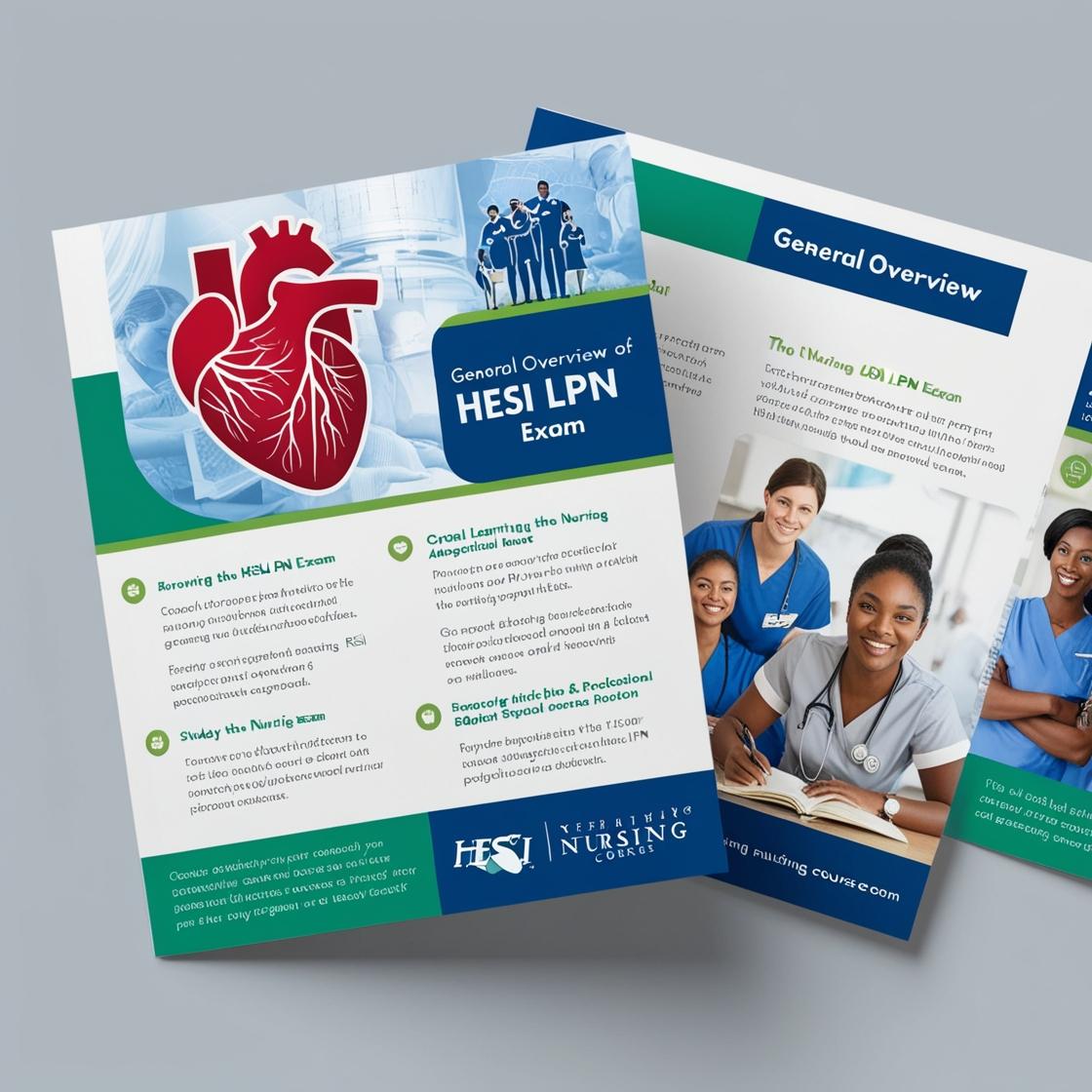HESI LPN
HESI CAT Exam Test Bank
1. When assessing a client's blood pressure and determining an auscultatory gap, which action should the nurse implement?
- A. Compare the palpated systolic blood pressure with the auscultated pressure
- B. Assess the client for lightheadedness upon standing
- C. Determine if an automated blood pressure reading is consistent with the manual reading
- D. Observe for changes in blood pressure between lying and sitting positions
Correct answer: A
Rationale: When an auscultatory gap is present, comparing the palpated systolic blood pressure with the auscultated pressure is crucial. This helps to accurately measure blood pressure and detect any discrepancies caused by the gap. Assessing for lightheadedness upon standing (choice B) is unrelated to addressing an auscultatory gap. Checking the consistency between automated and manual blood pressure readings (choice C) is important for validation but not specifically for managing an auscultatory gap. Observing blood pressure changes between lying and sitting positions (choice D) is relevant for orthostatic hypotension assessment but not for dealing with an auscultatory gap.
2. A female client is admitted for a diabetic crisis resulting from inadequate dietary practices. After stabilization, the nurse talks to the client about her prescribed diet. What client characteristic is most important for successful adherence to the diabetic diet?
- A. Understands the importance of timing insulin administration 30 minutes before eating
- B. Frequently includes fruits and vegetables in meals and snacks
- C. Has access to someone who can assist with meal preparation and monitoring
- D. Demonstrates willingness to consistently follow the prescribed diet
Correct answer: D
Rationale: The most crucial characteristic for successful adherence to a diabetic diet is the client's willingness to consistently follow the prescribed diet plan. Option A, understanding insulin timing, is important for treatment but not directly related to dietary adherence. Option B, consuming fruits and vegetables, is a healthy practice but does not ensure adherence to a specific diabetic diet. Option C, having assistance with meal preparation, is beneficial but not as essential as the client's personal commitment to adhering to the diet consistently.
3. A client who will be going to surgery states no known allergies to any medications. What is the most important nursing action for the nurse to implement next?
- A. Assess client’s knowledge of an allergic response
- B. Record 'no known drug allergies' on the preoperative checklist
- C. Flag 'no known drug allergies' on the front of the chart
- D. Assess client’s allergies to non-drug substances
Correct answer: B
Rationale: The most important action to take in this situation is to record 'no known drug allergies' on the preoperative checklist. This ensures that all healthcare staff involved in the surgery are aware of the client's stated lack of drug allergies, helping to prevent any potential adverse reactions. Assessing the client's knowledge of an allergic response (Choice A) may be valuable but is not the most crucial action at this point. Flagging 'no known drug allergies' on the front of the chart (Choice C) is less practical and visible compared to documenting it on the preoperative checklist. Assessing the client’s allergies to non-drug substances (Choice D) is not the priority in this scenario where the focus is on medications due to the upcoming surgery.
4. A client with myasthenia gravis (MG) is receiving immunosuppressive therapy. Review of recent laboratory test results shows that the client’s serum magnesium level has decreased below the normal range. In addition to contacting the healthcare provider, what nursing action is most important?
- A. Check the visual difficulties
- B. Note the most recent hemoglobin level
- C. Assess for hand and joint pain
- D. Observe rhythm on telemetry monitor
Correct answer: D
Rationale: The correct answer is to observe the rhythm on the telemetry monitor. Decreased magnesium levels can lead to cardiac issues, such as arrhythmias. Monitoring the heart rhythm is crucial in this situation. Checking visual difficulties (choice A) is not directly related to the potential cardiac effects of low magnesium levels. Noting the hemoglobin level (choice B) and assessing for hand and joint pain (choice C) are not the priority when dealing with low magnesium levels and possible cardiac complications.
5. During discharge teaching, the nurse discusses the parameters for weight monitoring with a client recently diagnosed with heart failure (HF). Which information is most important for the client to acknowledge?
- A. Weigh at the same time every day
- B. Report weight gain of 2 pounds (0.9kg) in 24 hours
- C. Maintain a daily weight record
- D. Limit dietary salt intake
Correct answer: B
Rationale: The correct answer is B. Reporting a weight gain of 2 pounds in 24 hours is crucial for detecting fluid retention or worsening heart failure. This rapid weight gain indicates possible fluid overload, which can be a sign of worsening HF. Option A is not as critical as the timing of weighing can vary. Option C is important for tracking trends but does not emphasize the significance of a sudden weight gain. Option D is relevant for managing HF but does not address the immediate need for reporting rapid weight gain.
Similar Questions

Access More Features
HESI LPN Basic
$69.99/ 30 days
- 50,000 Questions with answers
- All HESI courses Coverage
- 30 days access @ $69.99
HESI LPN Premium
$149.99/ 90 days
- 50,000 Questions with answers
- All HESI courses Coverage
- 30 days access @ $149.99
